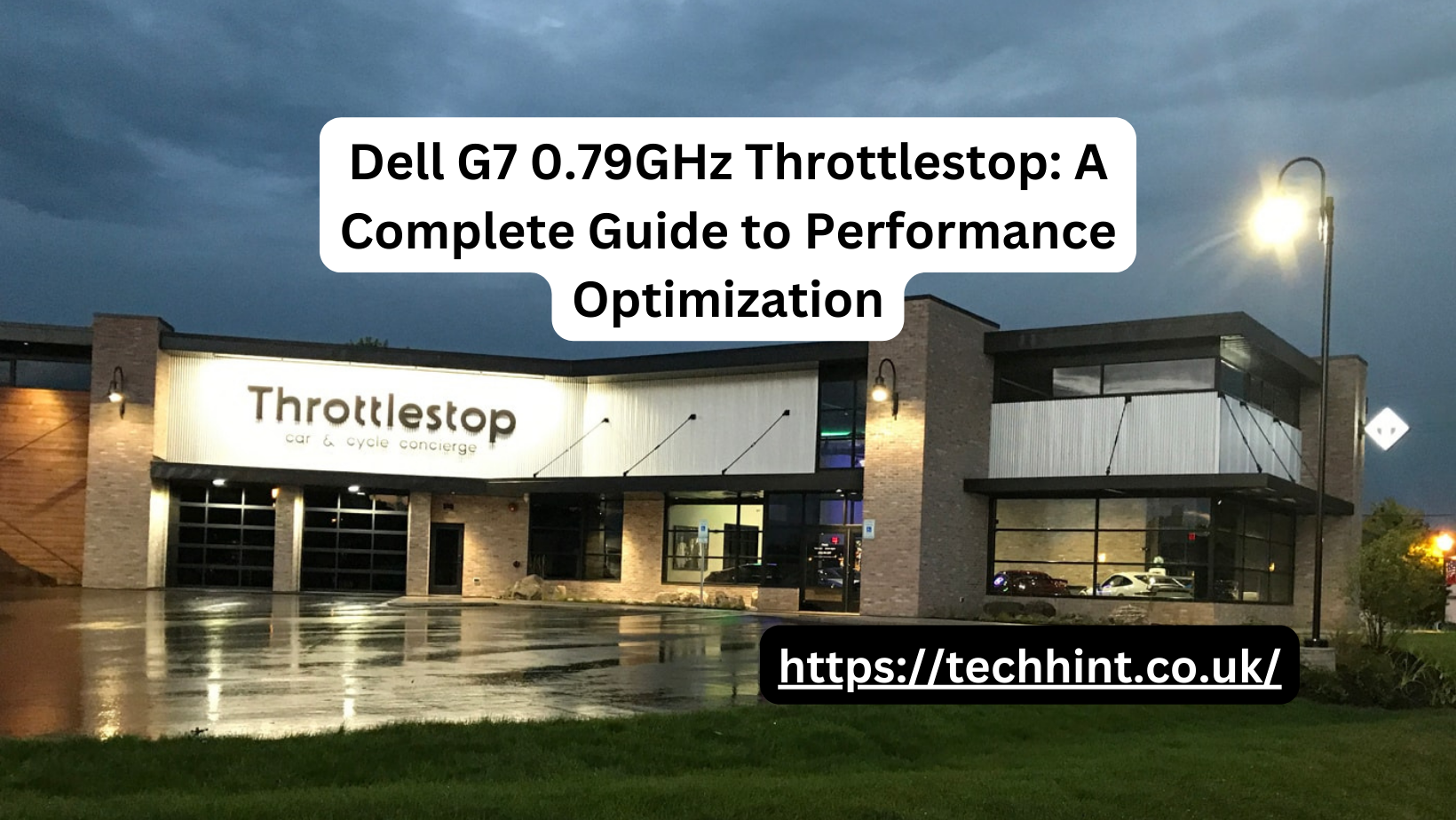If you’re a Dell G7 user, you might have encountered performance issues, such as your CPU clock speed dropping to 0.79GHz. This issue can severely affect gaming and productivity, leading to frustrating slowdowns. Luckily, Throttlestop is a tool that can help address this problem by unlocking the full potential of your CPU. In this article, we’ll dive deep into the causes of the Dell G7 0.79GHz throttling issue and how Throttlestop can be the solution you’re looking for.
What is the Dell G7 0.79GHz Throttlestop Issue?
The Dell G7 0.79GHz throttlestop issue is a common complaint among users of the Dell G7 series. The problem arises when the CPU becomes locked at a very low clock speed of 0.79GHz, making the laptop extremely slow and unresponsive. This throttling typically occurs when the system encounters a temperature spike or power management setting that triggers this protection mechanism.
Causes of Dell G7 0.79GHz Throttling
- Thermal Throttling: Dell G7 laptops are designed with safety mechanisms to prevent overheating. When the system temperature goes beyond a certain limit, the CPU is throttled down to 0.79GHz to prevent damage.
- Power Limit Throttling: In some cases, the Dell G7 0.79GHz throttlestop issue is triggered by power management settings. The laptop’s default settings might not allow enough power to the CPU, leading to throttling even when temperatures are normal.
- BIOS Settings: Some BIOS settings can also limit the CPU clock speed, which might be the cause of the throttling issue on your Dell G7.
- Battery and Power Supply Issues: If the power supply or battery is not functioning optimally, it can cause the system to limit the CPU performance to conserve energy.
How Throttlestop Can Help with Dell G7 0.79GHz Throttling
Throttlestop is a software utility designed to bypass or reduce CPU throttling. It allows users to manually adjust CPU power limits, disable certain throttling triggers, and ensure that the CPU operates at its maximum potential.
Key Features of Throttlestop for Dell G7 0.79GHz Throttling
- Power Limit Control: One of the main reasons for the Dell G7 0.79GHz throttlestop problem is power limit throttling. Throttlestop allows you to manually adjust these limits to ensure that your CPU gets enough power for high-performance tasks.
- Disable Thermal Throttling: Throttlestop can be used to disable thermal throttling mechanisms. If your system is getting throttled due to temperatures, Throttlestop can help push the CPU to its limits without triggering the safety measures.
- Voltage Adjustment: With Throttlestop, you can fine-tune the voltage that the CPU receives, allowing for more stable performance even under load.
- Real-Time Monitoring: Throttlestop provides real-time monitoring of your CPU’s performance, enabling you to make quick adjustments and optimize for gaming or work.
How to Fix Dell G7 0.79GHz Throttling Using Throttlestop
If you’re experiencing the Dell G7 0.79GHz throttlestop issue, follow these steps to resolve the problem and optimize your system’s performance.
Step 1: Download and Install Throttlestop
First, download the latest version of Throttlestop from a reputable source. Once downloaded, follow the on-screen instructions to install the software on your Dell G7 laptop.
Step 2: Disable BD PROCHOT
Once you open Throttlestop, look for an option labeled “BD PROCHOT.” This feature stands for “Bidirectional Processor Hot.” It’s a mechanism that can cause unnecessary CPU throttling when triggered by sensors. Disabling this option is one of the first steps in fixing the Dell G7 0.79GHz throttlestop issue.
Step 3: Adjust Turbo Power Limits
Next, navigate to the “Turbo Power Limits” section. Here, you can manually adjust the power limits for your CPU. Increase the values for both “Long Power PL1” and “Short Power PL2” to higher numbers to allow your CPU to draw more power, thus preventing the Dell G7 0.79GHz throttlestop issue.
Step 4: Undervolt the CPU
Undervolting is another useful technique to optimize performance without overheating. By reducing the voltage supplied to the CPU, you can lower temperatures while still maintaining high clock speeds. This step is especially useful in solving the Dell G7 0.79GHz throttlestop problem.
Step 5: Monitor and Test
After making these changes, it’s important to monitor the system’s performance. Throttlestop has a built-in feature to display the current clock speeds, temperature, and power consumption. Test the system by running games or high-performance applications to ensure that the Dell G7 0.79GHz throttlestop issue is resolved.
Other Tips to Prevent Dell G7 0.79GHz Throttling
While Throttlestop is an effective solution, there are other steps you can take to prevent your Dell G7 from throttling in the future.
1. Keep Your System Cool
Since thermal throttling is one of the main reasons for the Dell G7 0.79GHz throttlestop issue, ensuring proper cooling is essential. Clean the laptop’s fans regularly, use cooling pads, and avoid using the laptop on soft surfaces that trap heat.
2. Update BIOS and Drivers
Keeping your system’s BIOS and drivers up to date is critical for optimal performance. Manufacturers like Dell often release updates that fix issues like throttling. Regularly check Dell’s website for any updates to your system.
3. Use a High-Quality Power Supply
Ensure that your power supply is working correctly. Low-quality or malfunctioning chargers can cause power limit throttling, leading to the DellG7 0.79GHz throttlestop issue. Use a certified Dell power adapter and avoid third-party alternatives.
Read More : Dodge Ram Truck Clubs on the Western Slope of Colorado: A Community of Truck Enthusiasts
Conclusion
The Dell G7 0.79GHzthrottlestop issue can be incredibly frustrating for gamers and professionals who rely on their laptops for high-performance tasks. However, by using Throttlestop and following the steps outlined in this guide, you can unlock the full potential of your Dell G7 and prevent unwanted throttling.
By making adjustments to power limits, disabling unnecessary throttling triggers, and maintaining proper cooling, your Dell G7 can run smoothly without dropping to 0.79GHz. Don’t let throttling slow you down optimize your system with Throttlestop today and experience a significant boost in performance.
